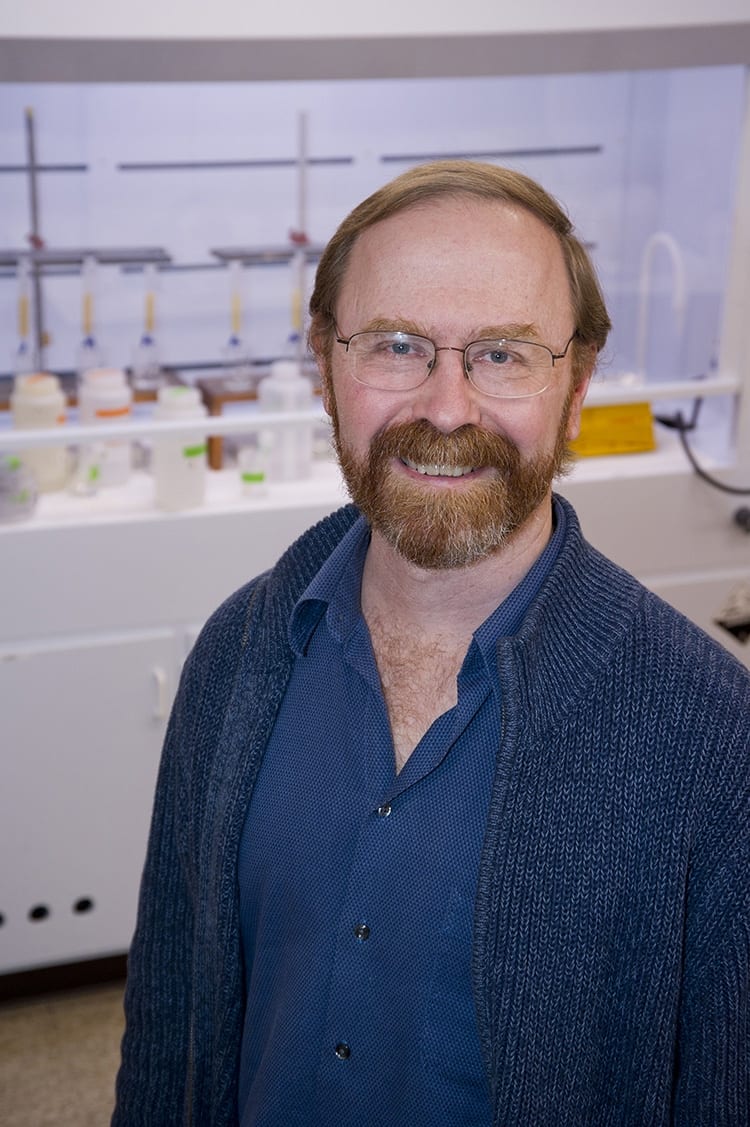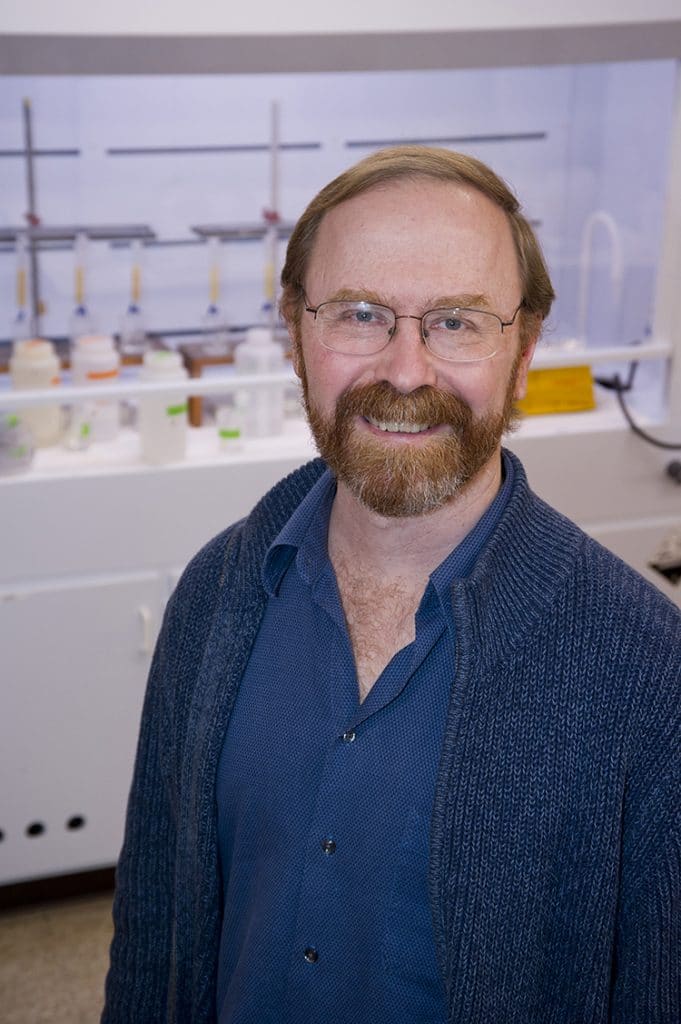Buesseler Appointed to Royal Netherlands Academy of Arts and Sciences

May 24, 2013
Woods Hole Oceanographic Institution Senior Scientist Ken O. Buesseler has been appointed a foreign member of the Royal Netherlands Academy of Arts and Sciences. Buesseler is one of two foreign members in the 2013 cohort of 17 new members. The selection committee made special notice of Buesseler’s pioneering role in detection and interpretation of radioactive plutonium in the oceans resulting from nuclear bomb tests.
Buesseler has a distinguished career as a radiochemist at WHOI. As a graduate student in the MIT/WHOI Joint Program in Oceanography, early in his career, Buesseler measured very low levels of plutonium in the Atlantic Ocean resulting from nuclear fall-out from atmospheric atomic bomb testing that peaked in the early 1960s. In 1986, Buesseler responded to the explosion and release of nuclear contaminants from the Chernobyl nuclear power plant, undertaking measurements of plutonium and other radioactive substances in the Black Sea.
In later work, Busseler used the natural radioactive element thorium as a “natural chronometer” for measuring the speed that particles sink down into the deep sea. These particles consist of the plankton that live in the upper 100 meters of the oceans using sunlight to convert carbon dioxide (CO2) to plant organic matter. Thus the sinking particles remove some CO2 from the atmosphere and bring carbon down into the deep sea. By measuring how much and how fast the carbon of plankton sinks into the deep sea, the work helps in the effort to predict how Earth will respond to increases in CO2 and the role the oceans play as a sink for CO2. Buesseler also explored the possibility of fertilizing the plankton with extra iron to see if that would increase the amount of carbon from falling particles into the deep sea.
Most recently, when in April 2011 there was an accident with the nuclear power plant in Fukushima (Japan), Buesseler quickly organized a research cruise and, within just over 2 months after the accident, he and his international team were measuring the radioactivity in the Pacific Ocean off Japan. That work continues today, with a recent cruise on the Umitaka Maru, a research and training vessel operated by the Tokyo University of Marine Science and Technology.
“Fukushima is an unprecedented release of radionuclides to the ocean, and there is more research needed than any one lab or country can take on,” said Buesseler. “Working together builds confidence in the results and increases our scientific insights.”
To increase public awareness of the lessons learned from Fukushima and studies of radionuclides in general, Buesseler has launched the Center for Marine and Environmental Radioactivity (http://www.whoi.edu/CMER) with the goals of public education, training the next generation of marine radiochemists, and supporting innovative research and engineering in environmental radiochemistry.
Buesseler served as executive scientist of the US Joint Global Ocean Fluxes Planning and Data Management Office and two years as an Associate Program Director at the US National Science Foundation, Division of Ocean Sciences, Chemical Oceanography Program. In 2011, he was noted as the top cited ocean scientist by the Times Higher Education for the decade 2000-2010.
Buesseler lived for four years as a teenager in The Netherlands, where his father was assigned to work. Buesseler attended high school in The Netherlands and speaks the Dutch language very well. A recent three-month sabbatical at the Netherlands Institute for Ocean Sciences (NIOZ) renewed his Dutch ties. Buesseler said the recent experience “was quite enjoyable” and hopes to return when possible.
The Royal Netherlands Academy of Arts and Sciences (Koninklijke Nederlandse Akademie van Wetenschappen, KNAW; www.knaw.nl) was founded in 1808 as an advisory body to the King and the Government – a role that it continues to play today. The Academy derives its authority from the quality of its members, who represent the full spectrum of scientific and scholarly endeavour and are selected on the basis of their achievements. Throughout more than two centuries several outstanding scientists have been appointed member of the Academy, and as off 1901 also several Nobel laureates beginning with Jacob Van ‘t Hoff the first Nobel prize winner in chemistry.
The membership comprises both Regular Members and Foreign Members and is organized in two divisions. The Science Division covers mathematics, physics, life sciences and technical sciences. The Humanities and Social Sciences Division covers the humanities, law, behavioural sciences and social sciences. In addition the KNAW is also responsible for seventeen internationally renowned institutes whose research and collections put them in the vanguard of Dutch science and scholarship
The Woods Hole Oceanographic Institution is a private, non-profit organization on Cape Cod, Mass., dedicated to marine research, engineering, and higher education. Established in 1930 on a recommendation from the National Academy of Sciences, its primary mission is to understand the ocean and its interaction with the Earth as a whole, and to communicate a basic understanding of the ocean’s role in the changing global environment.
Contact information:
Stephanie Murphy, Manager of Public Information
www.whoi.edu Woods Hole Oceanographic Institution
MS 16, Woods Hole, MA 02543 E: samurphy@whoi.edu or media@whoi.edu
O: 508-289-2271 C: 508-566-3055
Annelies ten Have
KONINKLIJKE NEDERLANDSE AKADEMIE VAN WETENSCHAPPEN (KNAW)
Het Trippenhuis, Kloveniersburgwal 29
P.O. Box 19121
1000 GC Amsterdam
Email: annelies.ten.have@knaw.nl Telephone: 00 31 20 551 0746

